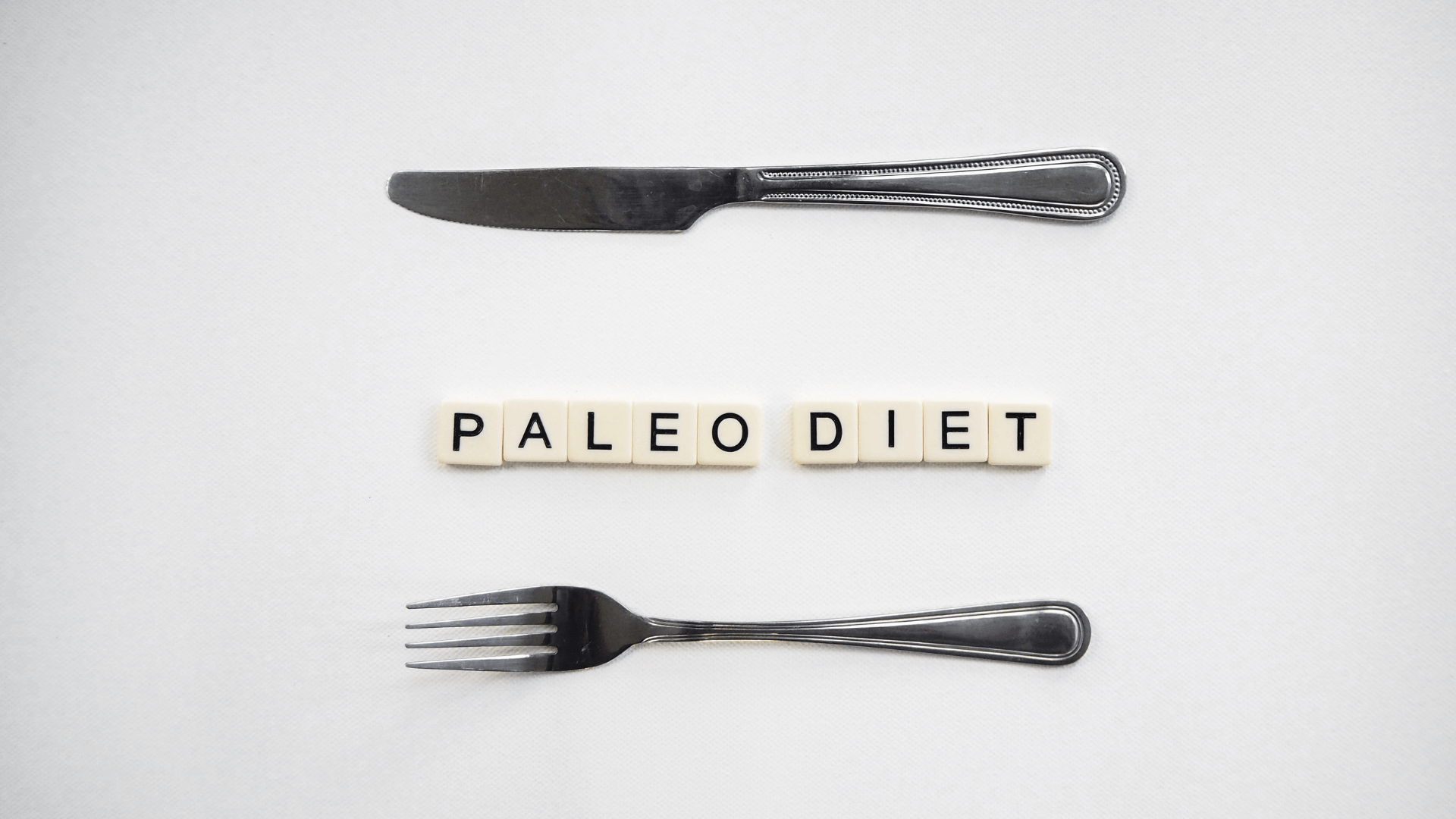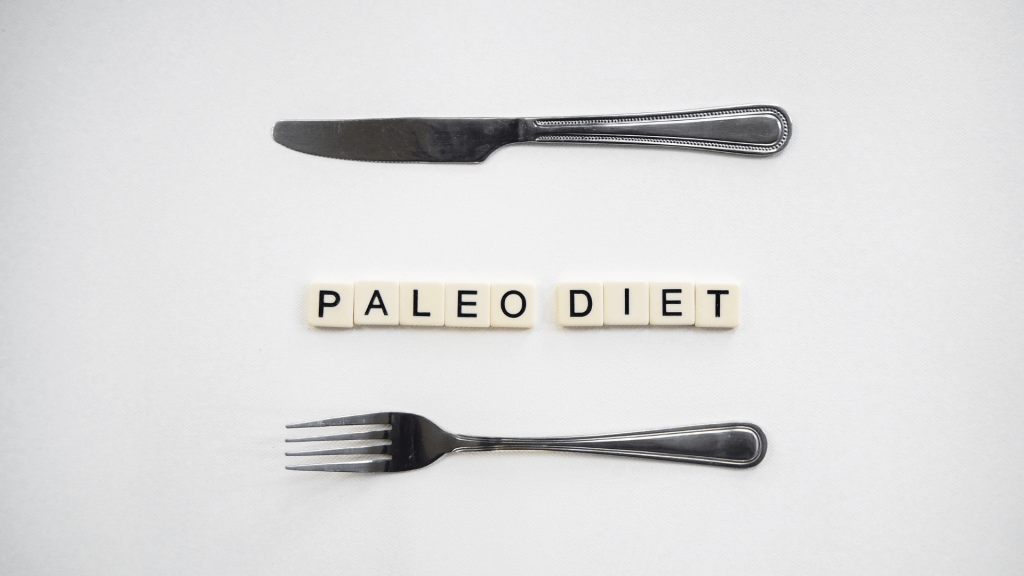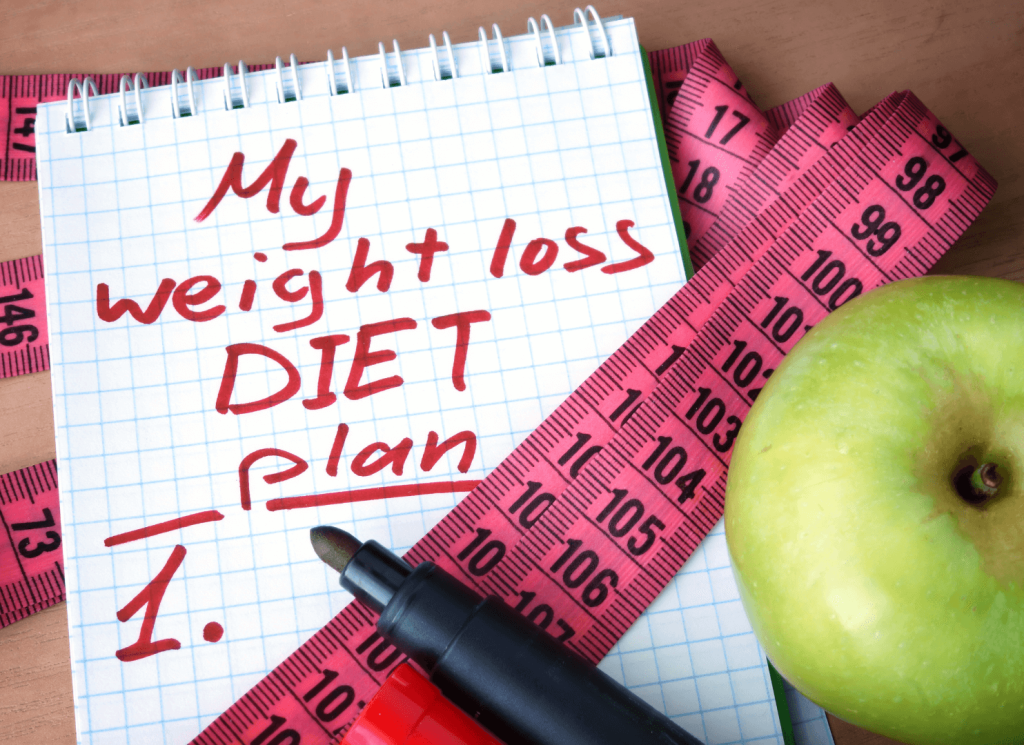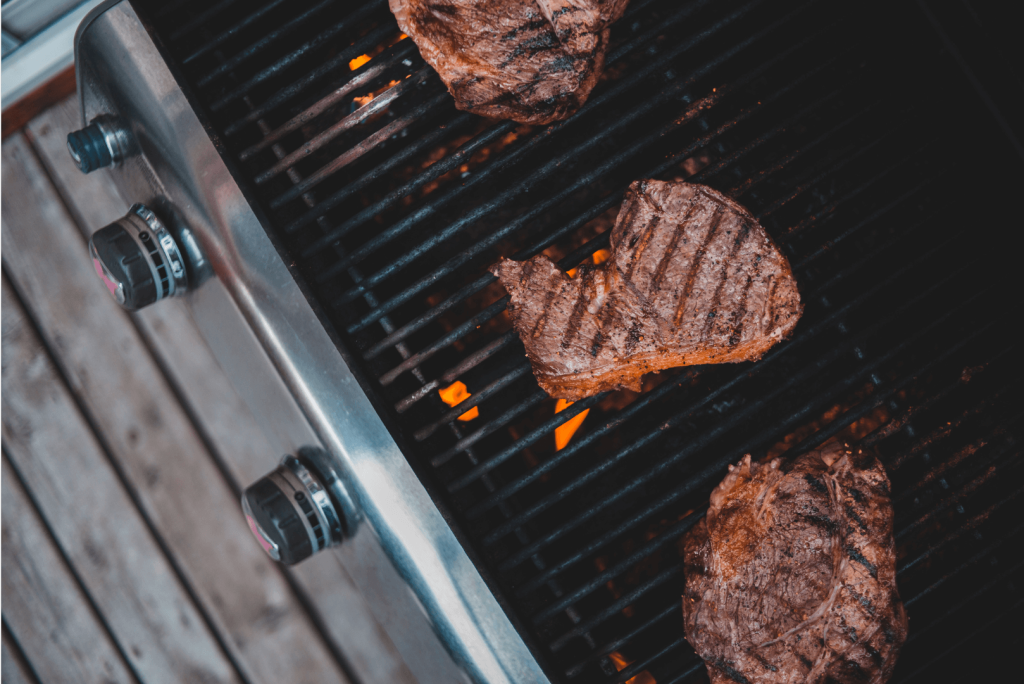
What is the Paleo Diet, and what are its benefits and risks?


What is the Paleo Diet, and what are its benefits and risks?
What Is A Paleo Diet?
The theory is we should eat like hunter-gatherers. It assumes that hunter-gatherers were free of modern chronic diseases such as cardiovascular diseases, diabetes, high blood pressure, and cancers.

The diet excludes foods that presumably did not exist 10,000 years ago, such as processed foods, grains, legume, dairy, and vegetable oil. It advises people to focus on high-quality, grass-fed, organic meat, and organic fruits and vegetables as much as possible.
One of the best things about the Paleo diet is that the rules of engagement are clear and straightforward. The diet took the world by storm with its simplicity, health benefits, and eco-consciousness.
The more hard-core Paleo enthusiasts may focus on wild game meat and foraging for wild plants and mushrooms. Many seek out produce from farms that practice biodynamic farming or regenerative agriculture.
Many Paleo followers also are motivated by strong environmental concerns. They examine the impact of their diet and actions on the environment. However, the logistics are different. Vegans think meat is the worst thing for the environment, but Paleo dieters believe that industrial agriculture and feedlot meats are the worst things for the environment. Whereas, regenerative agriculture that supports the topsoil and grass-fed animals that are allowed to roam freely are the best for the environment. Again, we’re not here to debate these things. You can form your own ethical, spiritual and political opinions.
Overall, the Paleo diet has formed one of the biggest online and global dietary tribes of people. There are many great things about this diet, but there are also pitfalls. This article is about harnessing the power of its principles to maximize your BiOptimization triangle without falling into its dogmas.
Strict Paleo Diet Includes:
- Grass-fed or wild meat, especially organ meats and fattier cuts
- Wild-caught or responsibly-raised fish and shellfish
- Pastured eggs
- Nuts and seeds
- Herbs
- Spices
- Sugar-free fermented vegetables, meat, and fish
- Healthy fats including avocados, coconuts, lard, tallow, olive oil, and animal fats
- Fruits and vegetables, including tubers but excluding white potatoes
- Small amounts of natural sweeteners such as stevia and monk fruit
Strict Paleo Diet Excludes:
- Grains and pseudograins
- Legumes
- Processed foods
- Sugar in all forms
- Soft drinks
- Dairy products
- Artificial sweeteners
- Vegetable oils
- Margarine
- Hydrogenated or trans fats
Many long-term Paleo dieters eventually bring back some gluten-free grains, legumes, and dairy such as butter, ghee, or heavy cream. Some only consume non-cow or A2 versions.
Health Benefits Of A Paleo Diet
As with most diets, the Paleo diet can be an excellent antidote to the Standard American Diet. It removes processed and inflammatory foods, while significantly cutting down toxins. At the same time, it increases satiating nutrient-dense foods such as vegetables, fruits, and organ meats. As a result, it usually lowers overall calories which can lead to weight loss.

Many Paleo dieters have successfully used the Paleo diet to achieve their weight loss goals. Many have been able to resolve their chronic health issues and became evangelists for the diet. Currently, many functional medicine doctors follow the Paleo nutrition approach as a therapeutic diet.
The significant and beneficial nutritional changes in a Paleo diet include:
- Reduction in dietary lectins, which may reduce inflammation for those who are sensitive to lectins.
- Increased micronutrient and antioxidant intake – vitamins and minerals both from food selection, choosing foods grown on healthy soil, and sourcing food locally.
- Reduced omega-6 intake and increased natural omega-3 intake.
- Reduced food-based toxins, such as pesticides, damaged fats, and antibiotics.
- Reduced overall carb intake by cutting out grains and other processed carbs.
- Increased overall intake of saturated and monounsaturated fats, along with fat-soluble vitamins.
- Increased fiber and polyphenol intake from eating more vegetables and fruits, which is good for your gut bacteria.
- Reduced hedonic eating from cutting out processed foods (with some exceptions), which typically reduces caloric intake.
- Increased awareness of how food affects their health and body, including hunger and satiety.
As a result, many Paleo eaters experience the following health benefits:
1)Reduced Inflammation
The ideal intake of omega-6 to omega-3 ratio is between 1:1 to 4:1, but with ubiquitous use of vegetable oils, most people consume over 10:1. The excess omega-6 is a major contributor of inflammation for people consuming the Standard American Diet.
Improving the quality of your fats on any diet is a PowerMove. Seafood is the richest source of omega-3s: mackerel, salmon, cod liver oil, herring, oysters, sardines, anchovies, and caviar are the top sources. For plant lovers, flax seeds, chia seeds, and walnuts are the winners.
Omega-6 fats are fragile molecules that are easily damaged by oxidative stress, so consuming a lot of it leads to cellular components that are more susceptible to oxidative damage. Overall, it increases all kinds of disease risks, including fatty liver, heart disease, rheumatoid arthritis, and Alzheimer’s.
Many people have food sensitivities that they are unaware of. The common ones are gluten, dairy, lectins, eggs, coffee, and nightshades. When they experiment with removing these foods, they often feel significantly better with less aches and pain, and clearer thinking. Sometimes the diet even puts their chronic health conditions into remission.
2) Better Blood Sugar Control
Sugar cravings are often signs of major blood sugar fluctuations. Elevated blood sugar accelerates aging by increasing AGEs (advanced glycation end products). Advanced glycation end products (AGEs) are proteins or lipids that become glycated as a result of exposure to sugars. By cutting out processed foods grains, legumes, and refined carbs, the Paleo diet is naturally a lower-sugar diet by default. This leads to more stable blood sugar levels.
The increase in micronutrients and omega-3, and the reduction in inflammation also help improve glycemic control. This often accompanies improvements in overall heart health markers, including cholesterol and triglycerides. For those who want to optimize their blood sugar levels even further, we suggest using Berberine Breakthrough.
3) Reduced Cravings
Cravings can often be a sign of nutrient deficiencies. Because the Paleo diet is a more nutrient-dense diet, those types of cravings are often lowered.
Paleo emphasizes whole-food sources of cellular carbs, such as sweet potatoes and squashes, which typically are better for satiety and glycemic control. You’ll feel more satisfied and have less cravings as a result.
When you try a new diet, your palate and microbiome adapt to the new one. As a result, some people experience less cravings for processed food items after a while.

4) Weight Loss
Many people naturally lose weight on the Paleo diet without rigorous calorie counting for many reasons. First, it reduces inflammation and cravings. Second, it improves blood sugar control. Third, it is higher in satiating fibers and polyphenols that feed the lean gut bacteria. Fourth, it reduces a lot of the factors that cause people to overeat with hedonic response in processed foods. Fifth, you’re eliminating calorie dense food. Sixth, it’s naturally higher in protein which helps anabolism and satiety. Lastly, it teaches people to be aware of their appetite and how foods affect their bodies.
All of these factors tend to reduce caloric intake and increase calorie expenditure, naturally leading to weight loss.
5) More Energy and Better Mood
Fatigue and low mood are often signs of poor blood sugar control and poor mitochondrial function, which can come from inflammation, toxicity, or nutrient deficiencies. By correcting all three of these problems, many Paleo dieters experience better energy and mood.
6) Remission of Chronic Diseases
Many Paleo eaters started the diet to see if it could help them manage their inflammatory conditions or put them into remission. Some of these are autoimmune, while others may include chronic pain, allergies, or migraines.
Removing gluten and other gut irritants may help reduce autoimmunity by reducing intestinal permeability. More and more clinical studies are demonstrating that the Paleo or AIP diet can help reduce inflammation and improve quality of life in these patients.
Potential Risks and Downsides of a Paleo Diet
1) Too Much Meat and Fat
Some people may not do well with so much meat and fat on their diet. However, it is possible to adjust the diet within the Paleo framework to make it healthy for them.

2) Potential Nutrient Deficiencies
Nutritional deficiencies may occur on a Paleo diet, especially for nutrients that are fortified in processed foods such as iodine and folate. This is why regularly testing and looking at your nutrigenomics is key.
3) May be suboptimal for achieving a very lean physique
The default Paleo diet may be too high in both carbohydrates and fats, making it difficult to achieve a very lean physique without manipulating the macros. This is easy to overcome by fitting your Paleo-compliant diet into your macronutrients
4) Carb withdrawal
Some people do experience symptoms of carb withdrawal and keto-adaptation on a Paleo diet. Many athletes, especially those in strength and explosive sports, need additional carbs to support their training and performance. Also, kApex, our keto digestive enzyme blend, contains some ingredients that can support your energy levels as you start a ketogenic or Paleo-style diet.
5) Restrictive diet may be socially isolating
It can be a very restrictive diet which makes it hard to enjoy social events and travels. However, since it’s become more popularized, there are now more restaurants and online options available. Again, as long as you stay within your calorie allotment, you should be able to enjoy a plate of tasty processed carbs once in a while without losing your progress.
Now that you’ve learned about the Paleo diet, you may be looking for a resource to start. Our Primal Paleo cookbook provides 81 delicious recipes developed by the Primal Chef Gil Butler.
References
- Gong T, Wang X, Yang Y, et al. Plant lectins activate the NLRP3 inflammasome to promote inflammatory disorders. J Immunol. 2017;198(5):2082-2092. doi:10.4049/jimmunol.1600145
- Simopoulos AP. The importance of the omega-6/omega-3 fatty acid ratio in cardiovascular disease and other chronic diseases. Exp Biol Med (Maywood). 2008;233(6):674-688. doi:10.3181/0711-MR-311
- Kumar Singh A, Cabral C, Kumar R, et al. Beneficial effects of dietary polyphenols on gut Microbiota and strategies to improve delivery efficiency. Nutrients. 2019;11(9):2216. doi:10.3390/nu11092216
- Yeomans MR, Blundell JE, Leshem M. Palatability: response to nutritional need or need-free stimulation of appetite? Br J Nutr. 2004;92(S1):S3-S14. doi:10.1079/bjn20041134
- Patterson E, Wall R, Fitzgerald GF, Ross RP, Stanton C. Health implications of high dietary omega-6 polyunsaturated Fatty acids. J Nutr Metab. 2012;2012:539426. doi:10.1155/2012/539426
- Lerner A, Shoenfeld Y, Matthias T. Adverse effects of gluten ingestion and advantages of gluten withdrawal in nonceliac autoimmune disease. Nutr Rev. 2017;75(12):1046-1058. doi:10.1093/nutrit/nux054
- Konijeti GG, Kim N, Lewis JD, et al. Efficacy of the autoimmune protocol diet for inflammatory bowel disease. Inflamm Bowel Dis. 2017;23(11):2054-2060. doi:10.1097/mib.0000000000001221
- Abbott RD, Sadowski A, Alt AG. Efficacy of the Autoimmune Protocol diet as part of a multi-disciplinary, supported lifestyle intervention for Hashimoto’s thyroiditis. Cureus. 2019;11(4):e4556. doi:10.7759/cureus.4556






